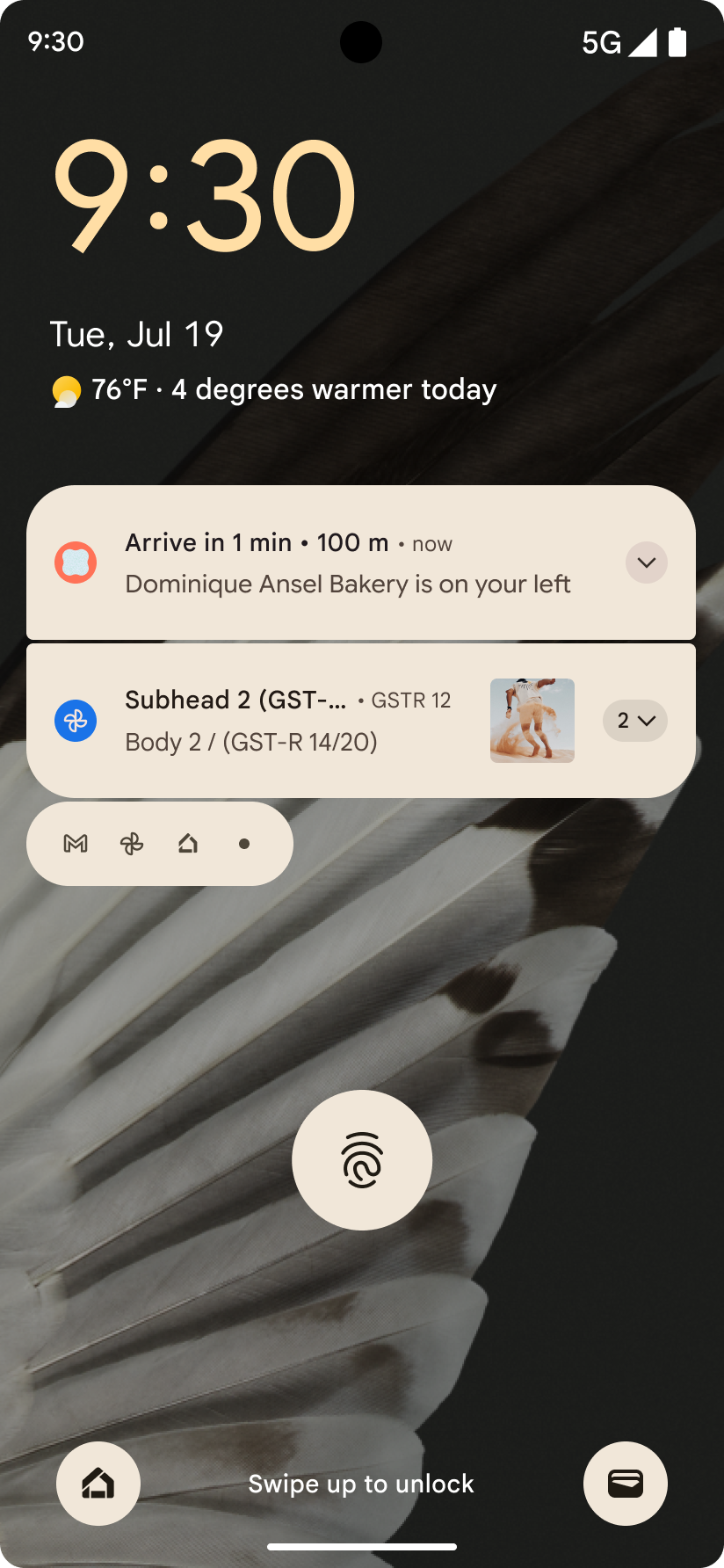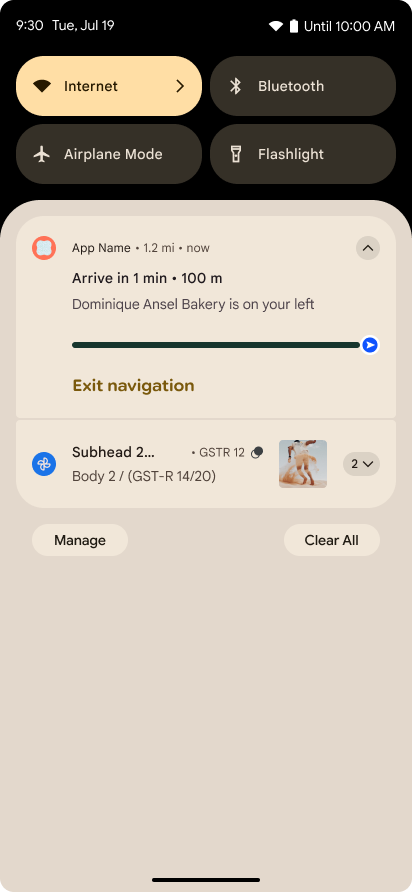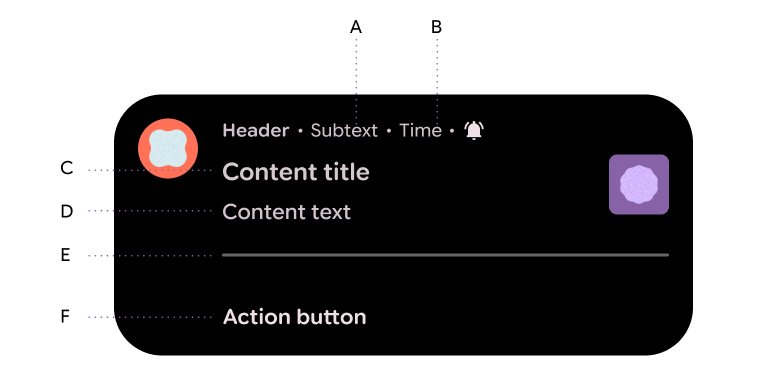Android 16 引入了以进度为中心的通知,可帮助用户顺畅地跟踪用户发起的端到端历程。
Notification.ProgressStyle 是一种新的通知样式,可让您创建以进度为中心的通知。主要用例包括共享车辆、送货和导航。在 Notification.ProgressStyle 类中,您可以使用点和细分来表示用户体验历程中的状态和里程碑。

锁屏上显示的以进度为中心的通知。

在通知栏中显示的以进度为中心的通知。
相关类和方法
以下类包含用于构建 ProgressStyle 通知的不同 API:
结构和自定义
以下图片显示了构成 ProgressStyle 通知的不同部分:
以下图片显示了构成 ProgressStyle 通知的不同部分:

A. 标题 - 副文本 |
|
B. 标题 - 时间 |
|
C. 内容标题 |
|
D. 内容文本 |
|
E. 进度条 |
|
F. 操作按钮 |

最佳做法
请遵循以下最佳实践,以便通过以进度为中心的通知提供尽可能出色的用户体验:
- 确保设置了正确的字段,以满足宣传信息的公开范围要求。
- 使用合适的视觉元素引导用户完成整个历程。例如,共享车应用应使用
Notification.setLargeIcon()设置车辆图片以及共享车体验中所用车辆最准确的颜色 - 使用简洁明了的语言来定义该用户体验历程的进度。 到达时间、司机姓名和行程状态是应在通知中传达的重要文本。
- 在通知中提供实用且相关的操作,有助于简化用户体验历程。例如,在餐食送达前,为新发起的订单提供小费或添加其他菜肴都是可执行的操作。
- 使用线段和点来表示状态。例如,使用线段为共享行程中的交通状态和时长着色,并使用数据点来表示里程碑、食物准备、送餐和乘客上车状态。
- 经常准确更新进度体验,以便与用户体验的实际进度相符。例如,变化的交通状况可以反映在路段颜色变化和文本更新中。
以下代码段展示了如何将 ProgressStyle 通知用于共享车辆情境:
var ps =
Notification.ProgressStyle()
.setStyledByProgress(false)
.setProgress(456)
.setProgressTrackerIcon(Icon.createWithResource(appContext, R.drawable.ic_car_red))
.setProgressSegments(
listOf(
Notification.ProgressStyle.Segment(41).setColor(Color.BLACK),
Notification.ProgressStyle.Segment(552).setColor(Color.YELLOW),
Notification.ProgressStyle.Segment(253).setColor(Color.WHITE),
Notification.ProgressStyle.Segment(94).setColor(Color.BLUE)
)
)
.setProgressPoints(
listOf(
Notification.ProgressStyle.Point(60).setColor(Color.RED),
Notification.ProgressStyle.Point(560).setColor(Color.GREEN)
)
)
请注意,在此示例中,为追踪器图标设置了车辆图片,并使用路段和点来表示共享行程体验和里程碑,以提供更完整的用户体验。
如需了解详情,请参阅示例应用。

